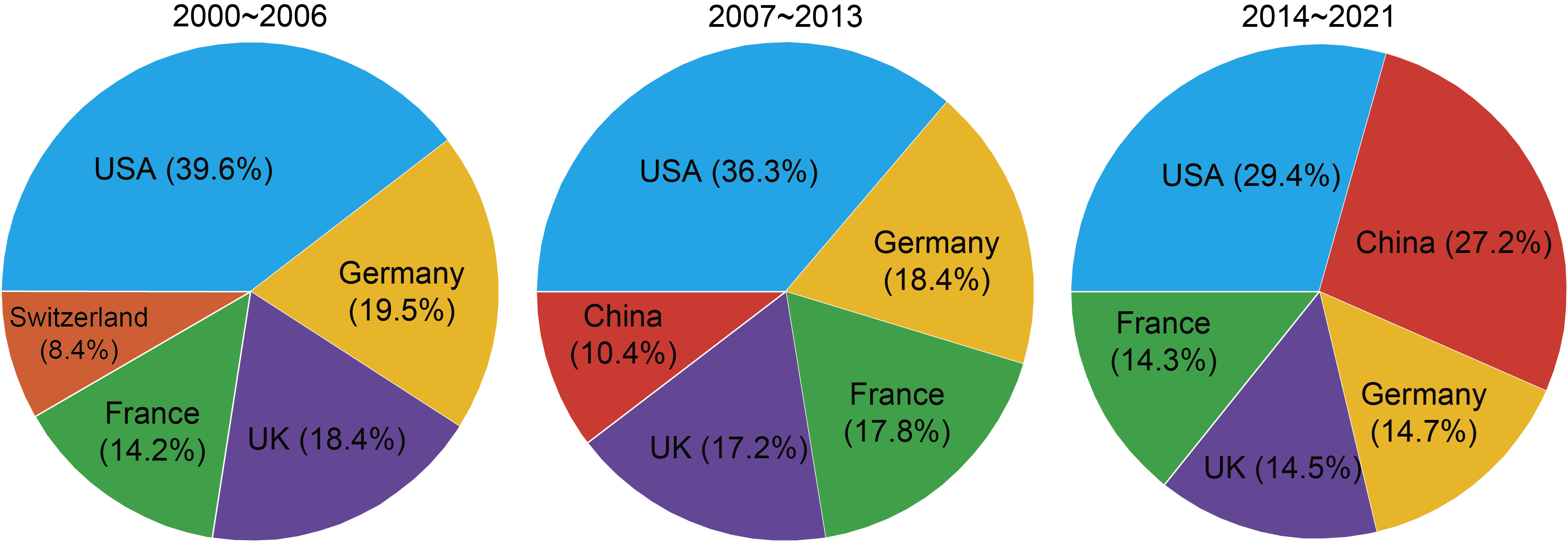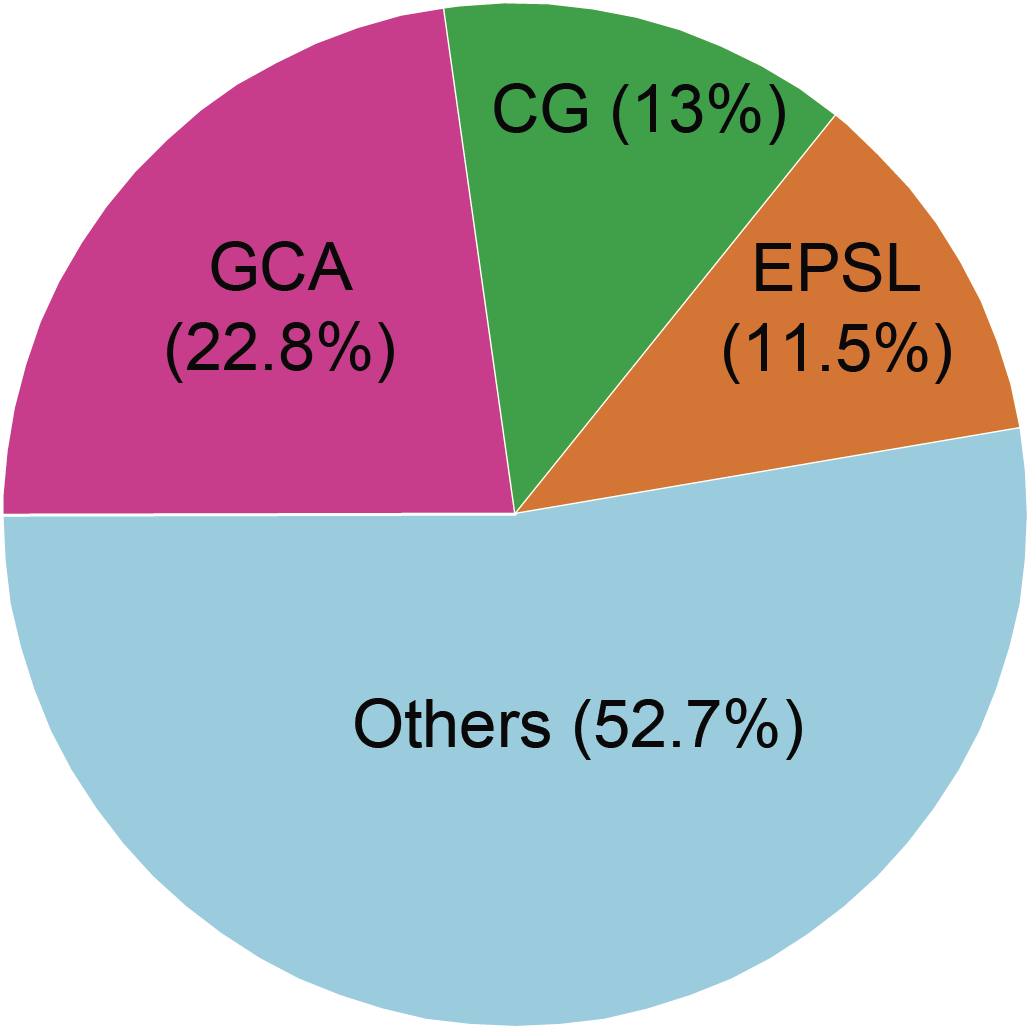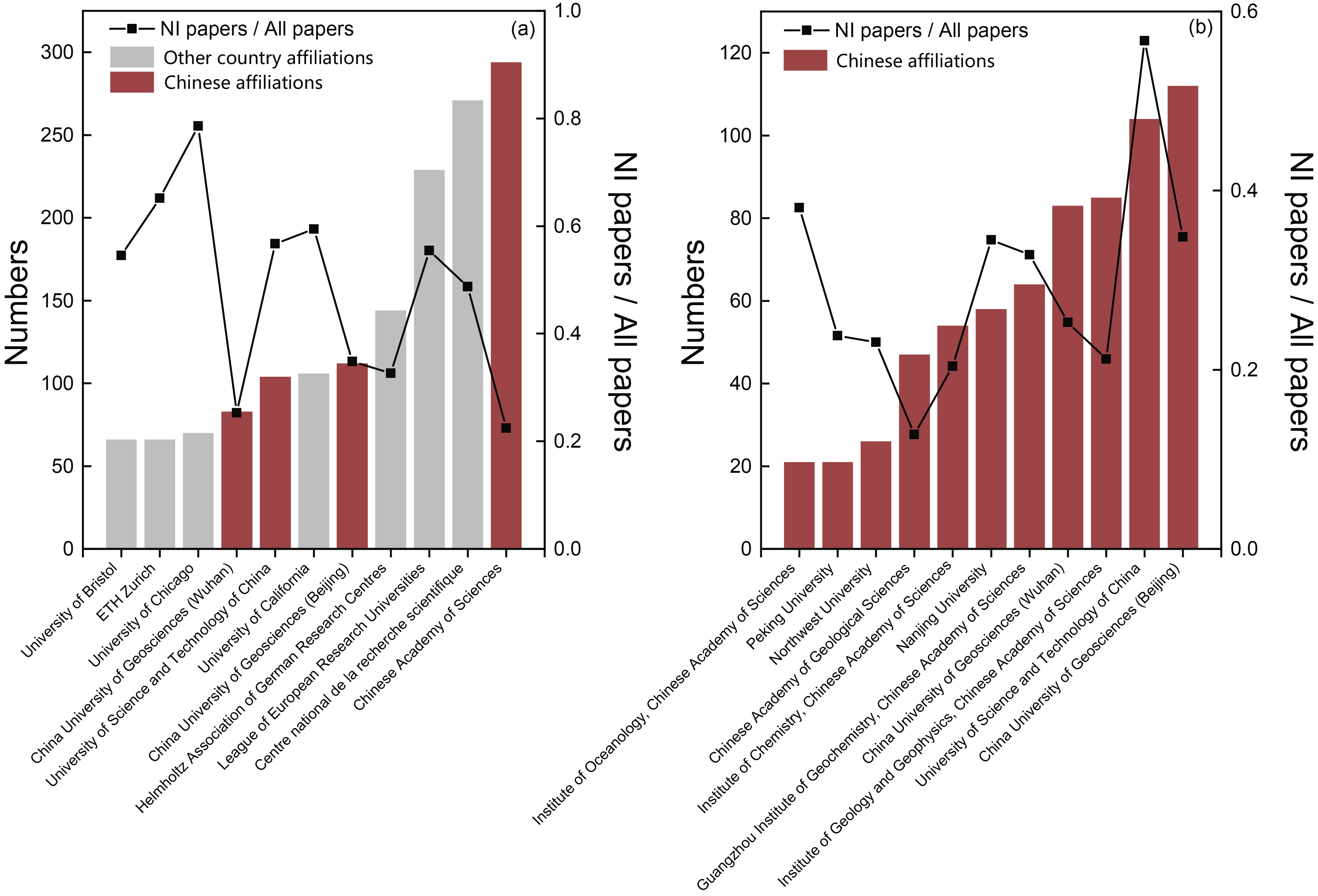The past and present of non-traditional stable isotopes
Since this century, the booming development of non-traditional stable isotopes has become one of the most striking advances in geochemistry. Various isotope systems have been successively developed and applied in fields such as solid earth science, planetary geochemistry, and low-temperature geological processes, and have made remarkable progress.
This project was suggested by one of my advisors, Li-Hui Chen. We reconstruct the history of the development of the non-traditional stable isotopes through bibliometrics. A total of 4111 relevant publications were included in the statistics.

Fig. 1. Numbers of publications of 15 isotopes.

Fig. 2. Number of publications of non-traditional stable isotopes by different countries. Switzerland dropped out of the top five in later 2 stages, and the proportions of the United Kingdom, Germany, and France were basically stable. The share of the United States continues to decline, and China catches up from behind.

Fig. 3. The three journals that publish the most publications on non-traditional stable isotopes. Reflecting the academic community’s strong interest in non-traditional stable isotopes.

Fig. 4. The number of papers and co-occurrence density in different countries. The size of the circle represents the number of publications, and the thickness of the line represents the closeness of the relationship between countries.

Fig. 5. Since the proportions of the United Kingdom, France, and Germany have remained basically unchanged in several stages, while the proportions of the United States and China have changed greatly, we compare them in groups. Also analyze the ratios of the numbers of NI publications to the total number of publications.

Fig. 6. The top ten international institutions and Chinese institutions with the highest number of publications, also show the proportion of NI publications to all publications.